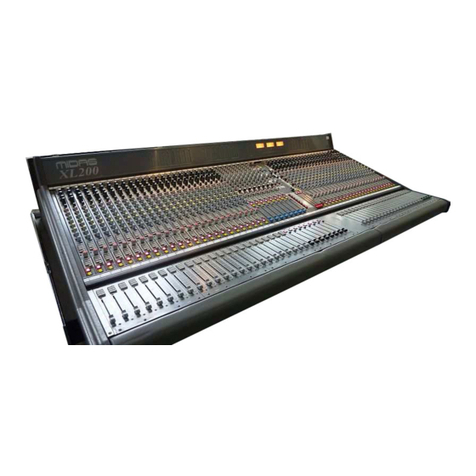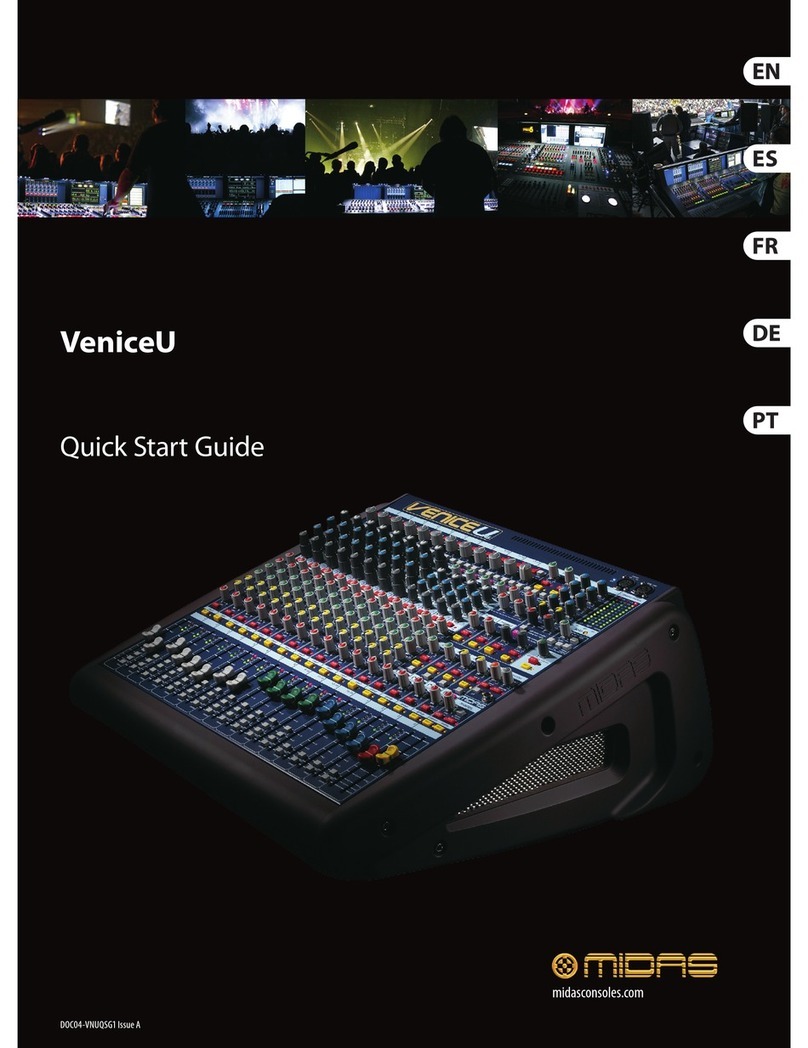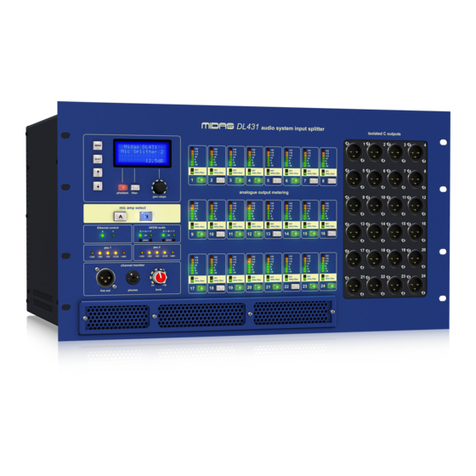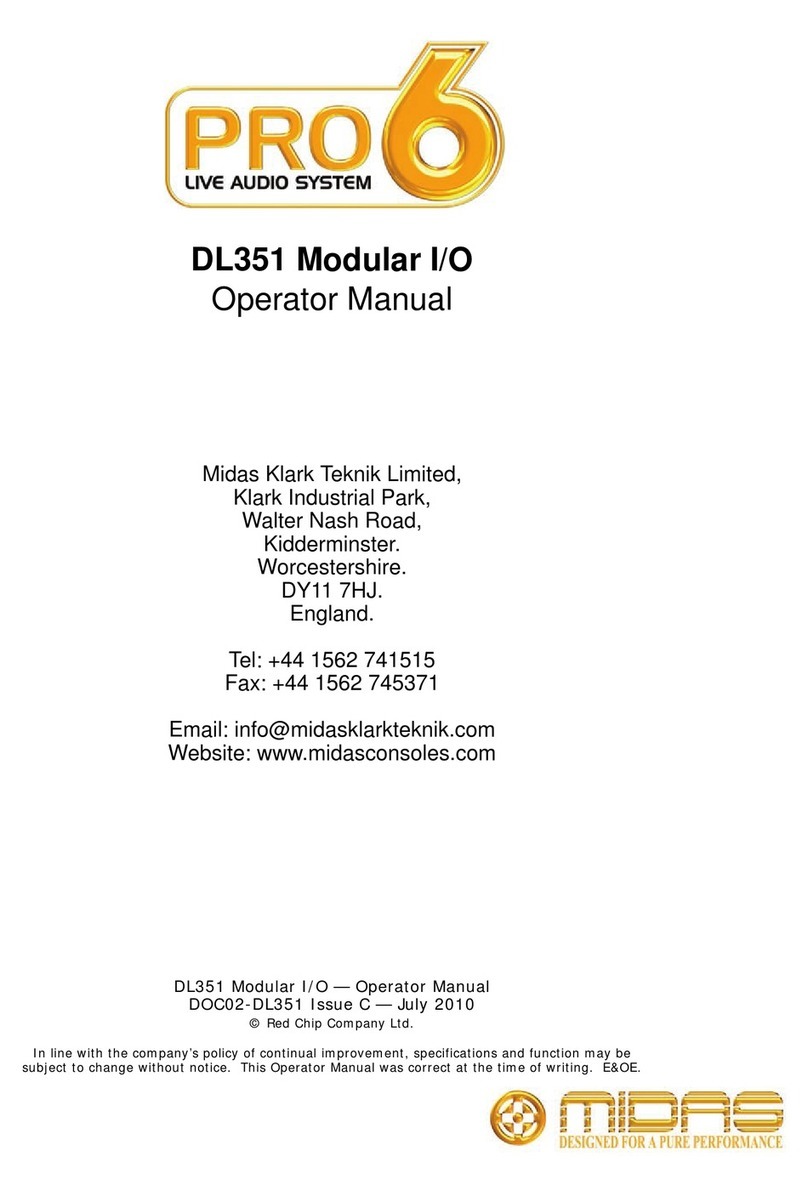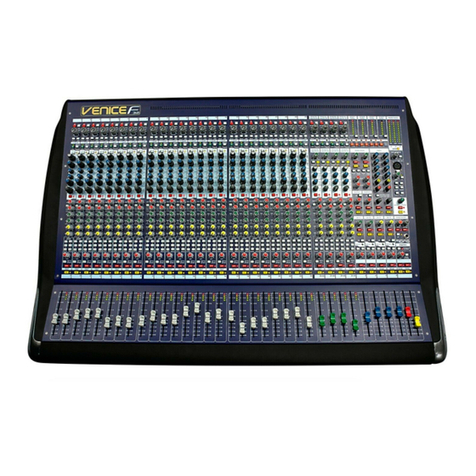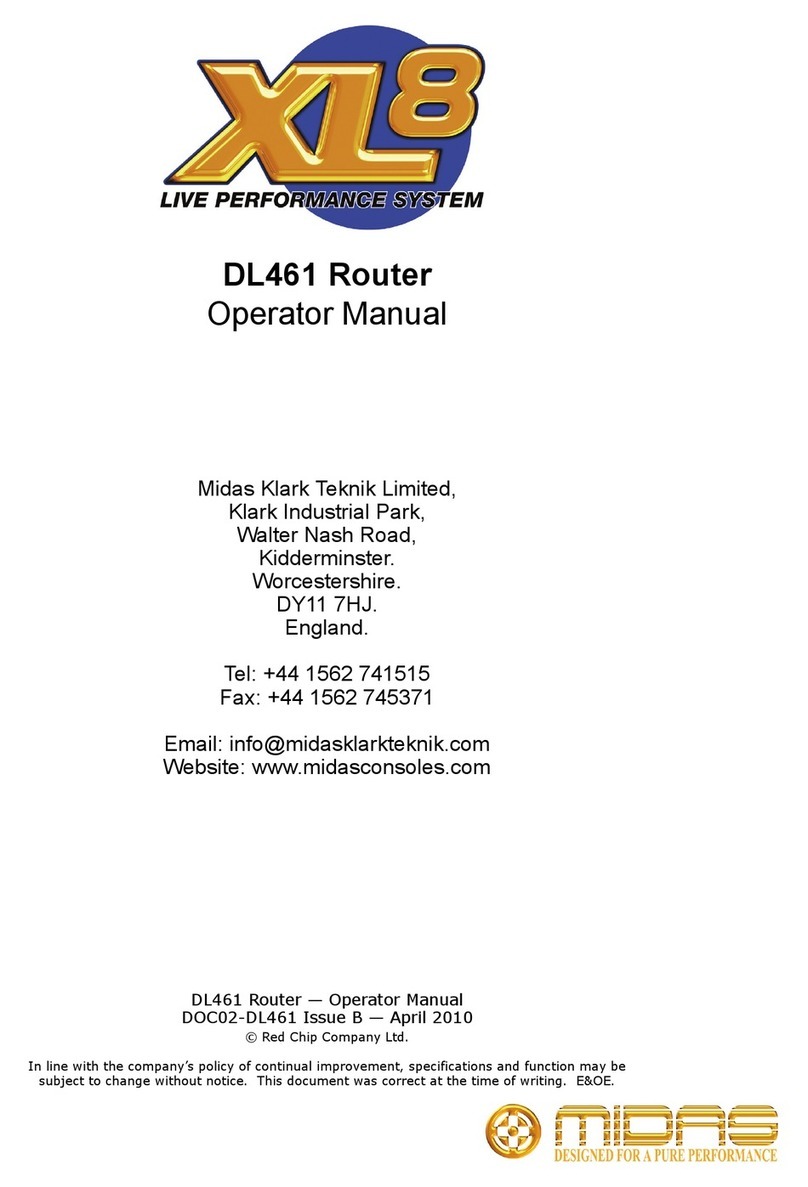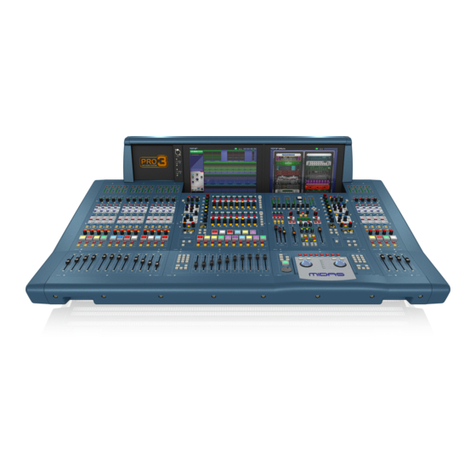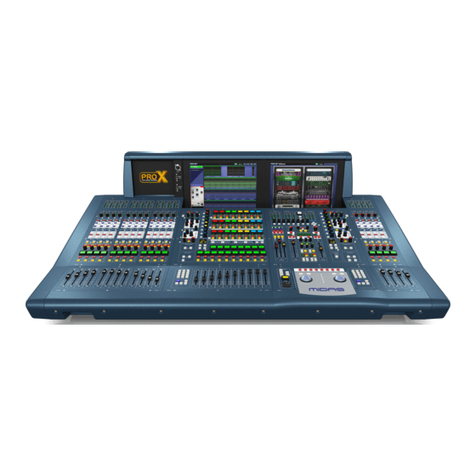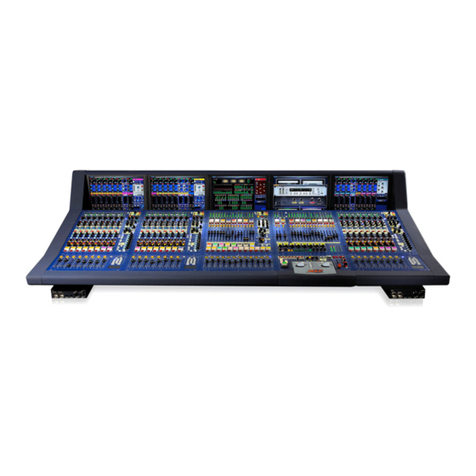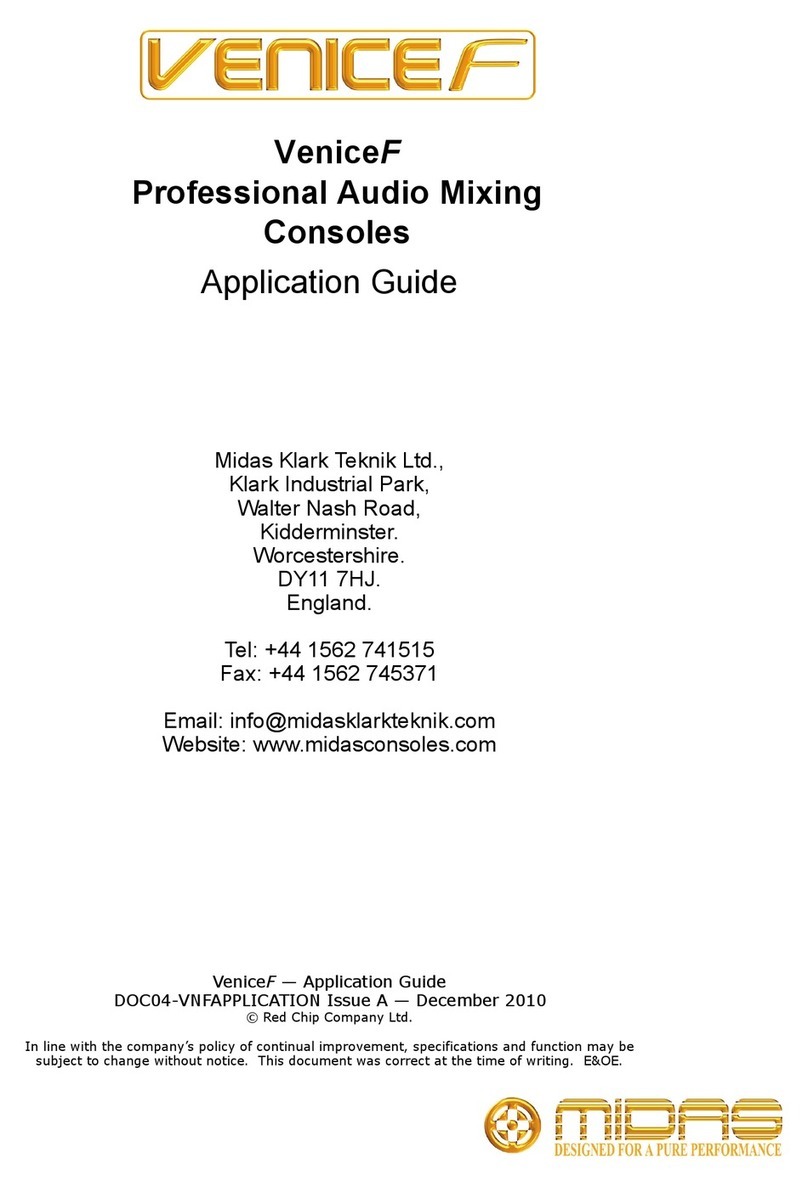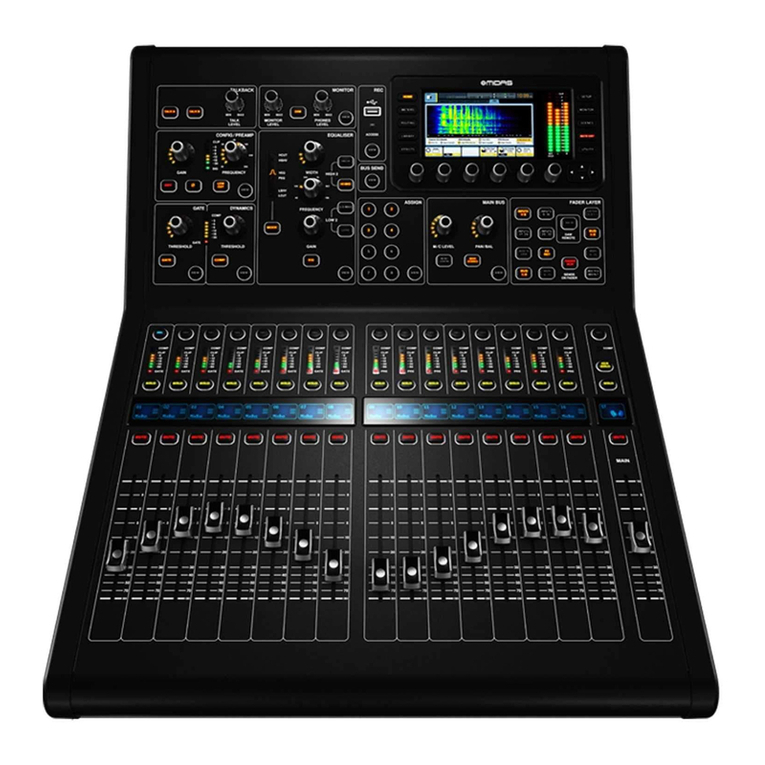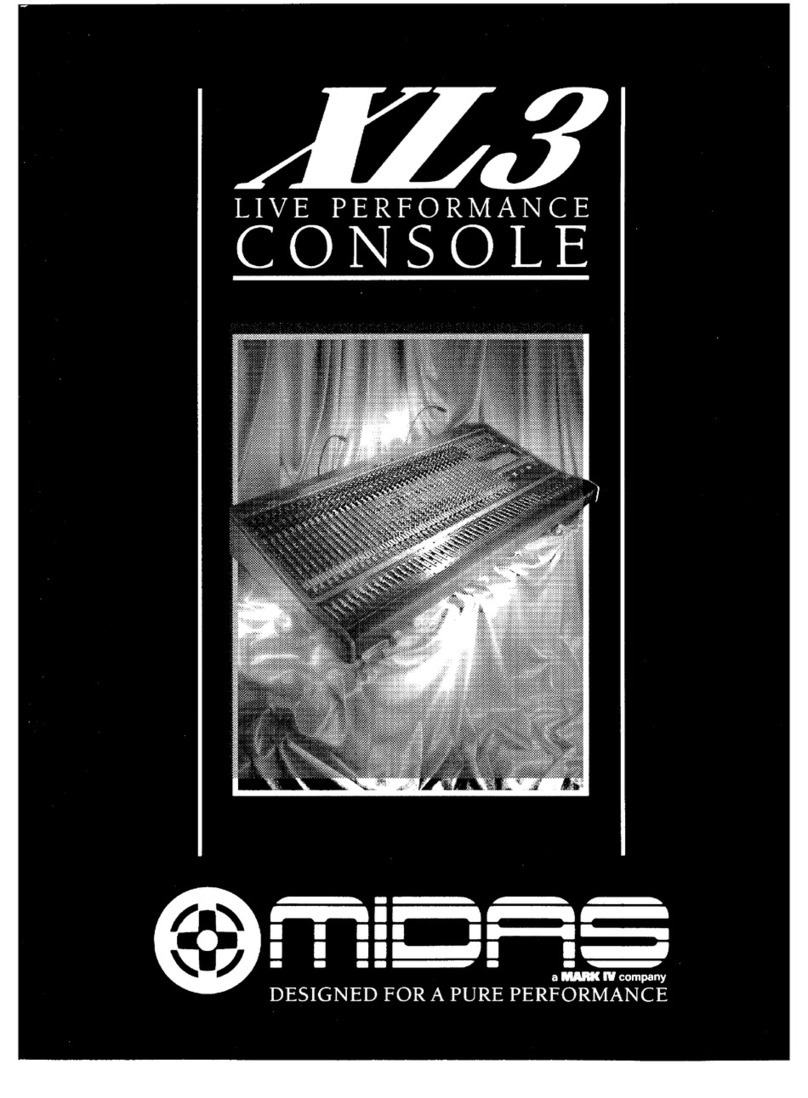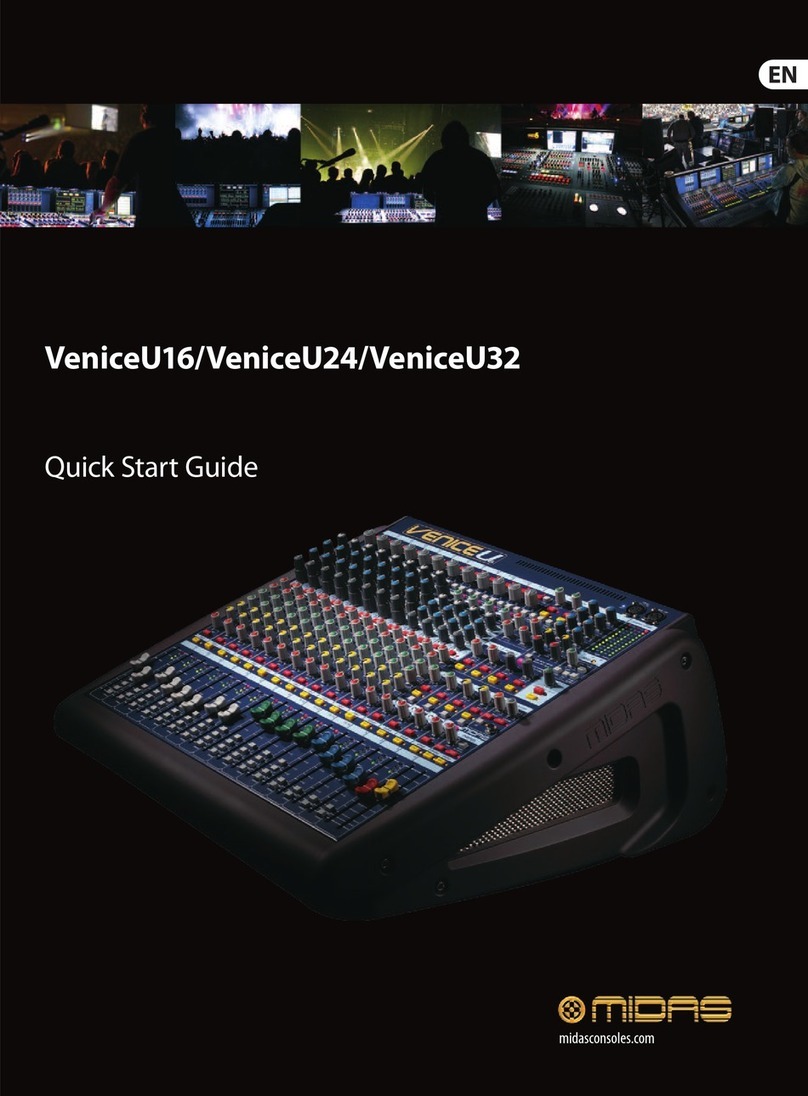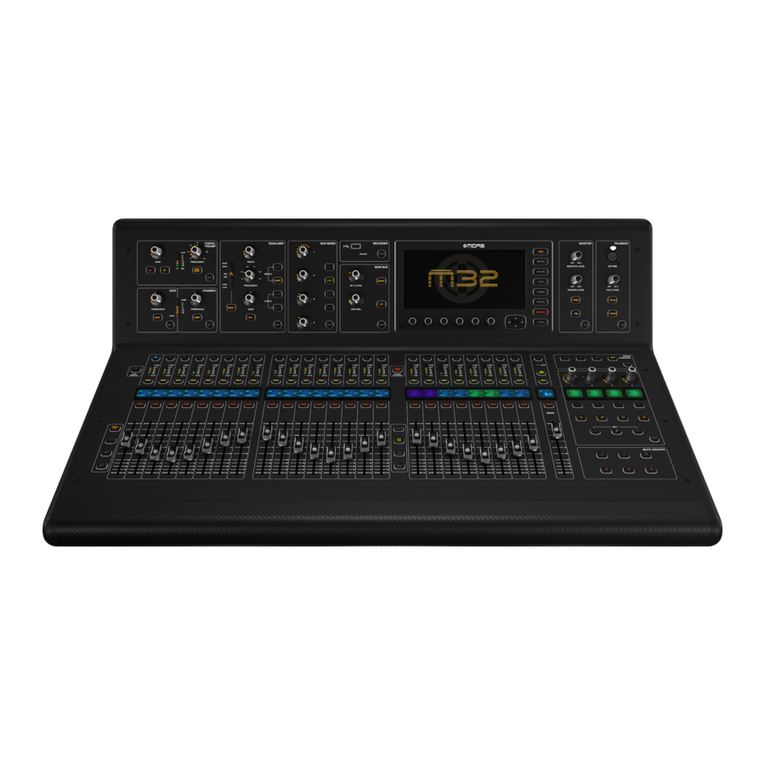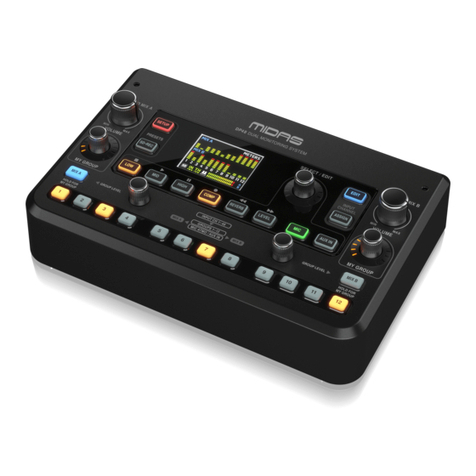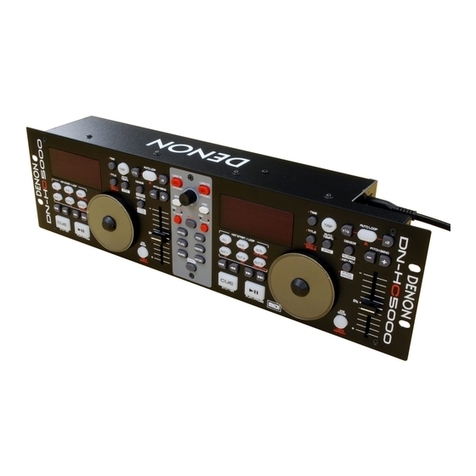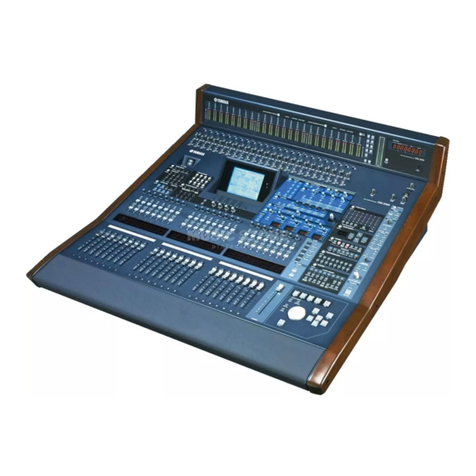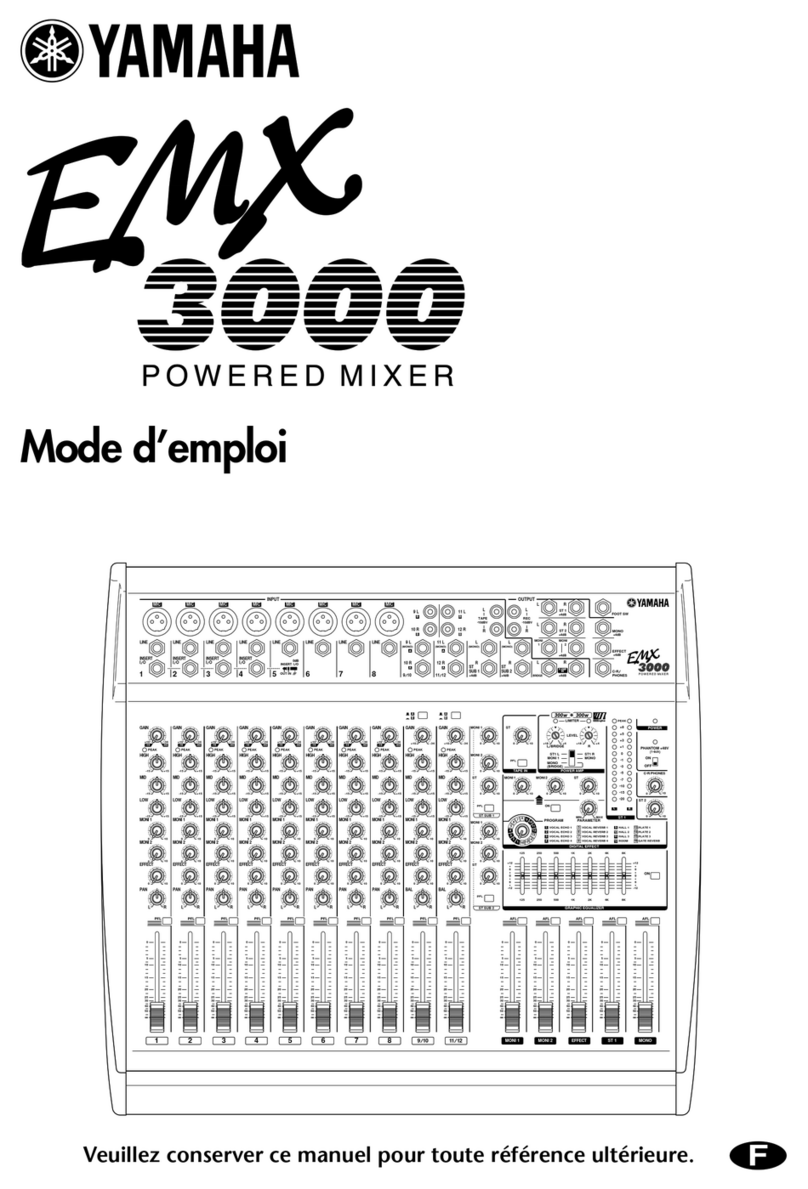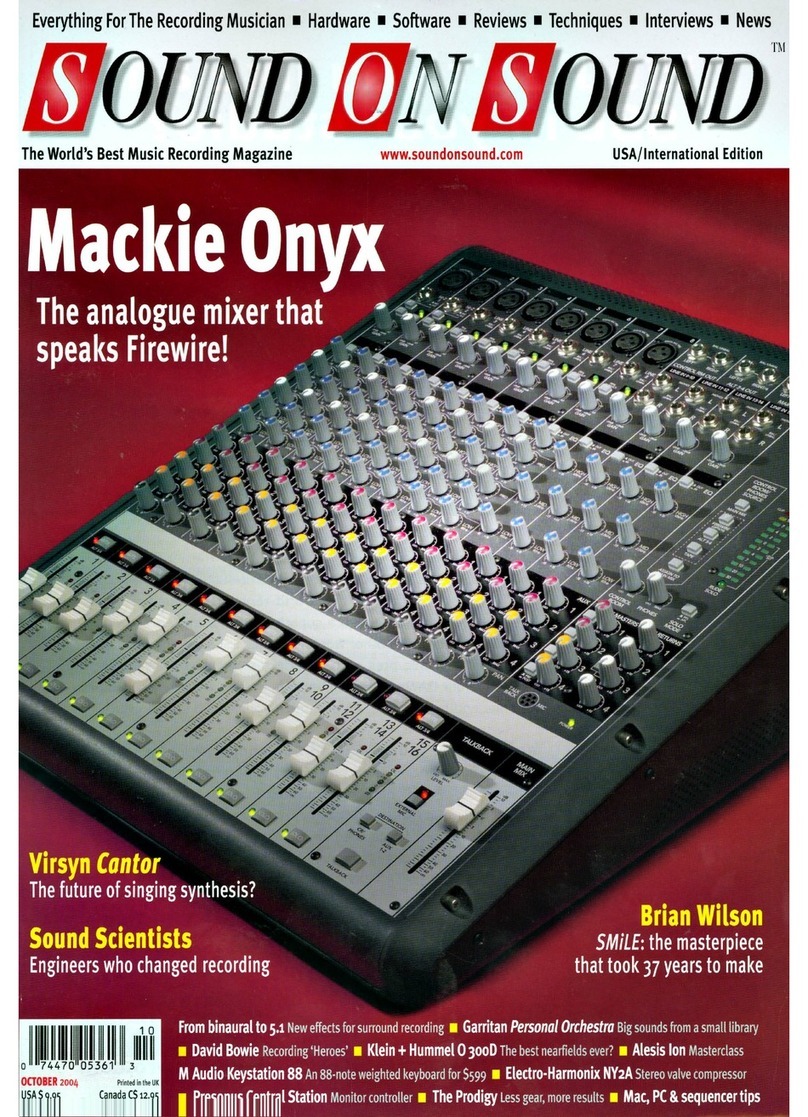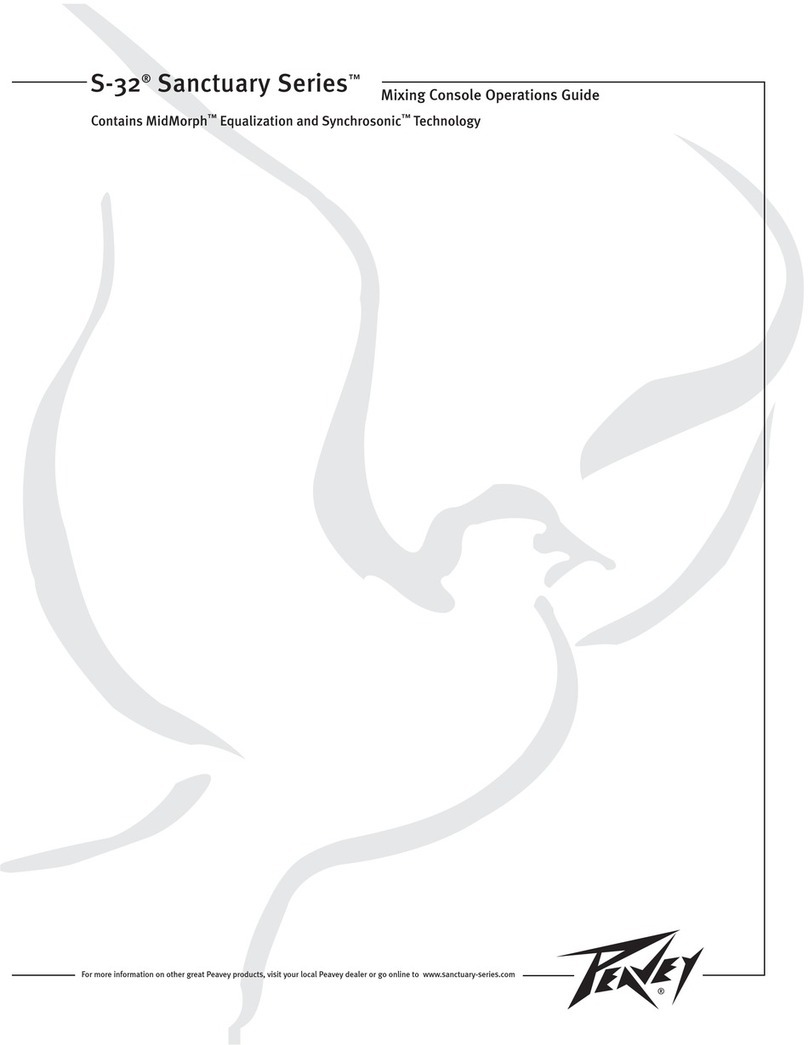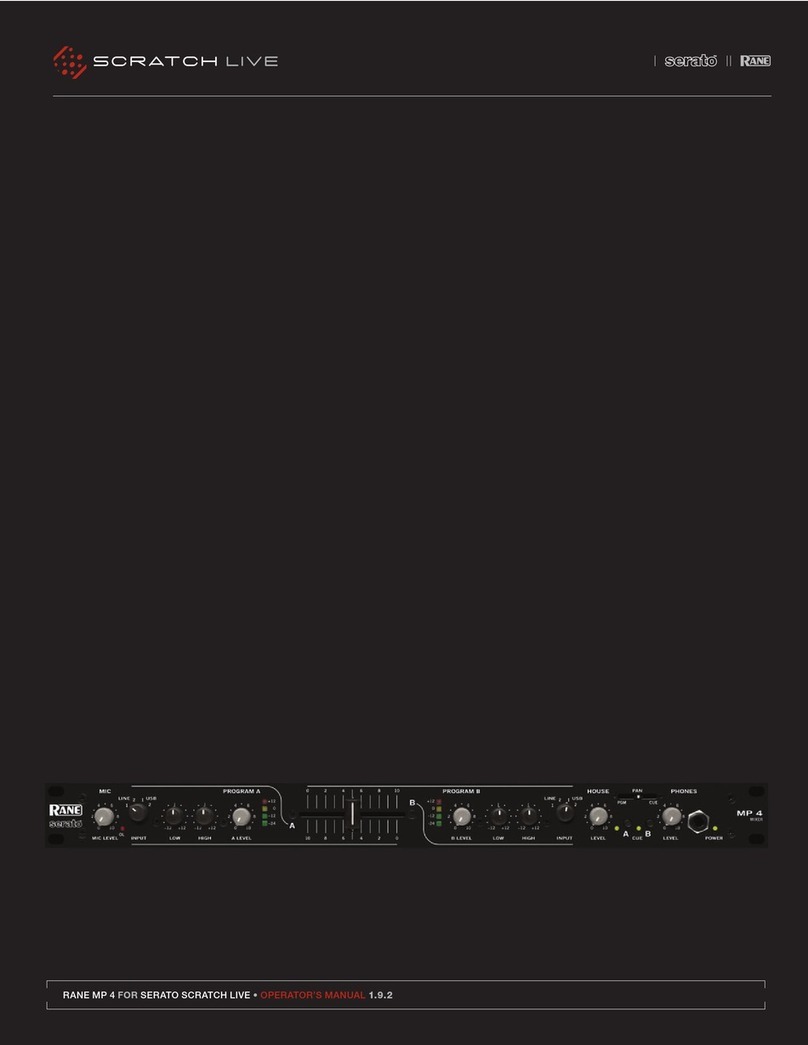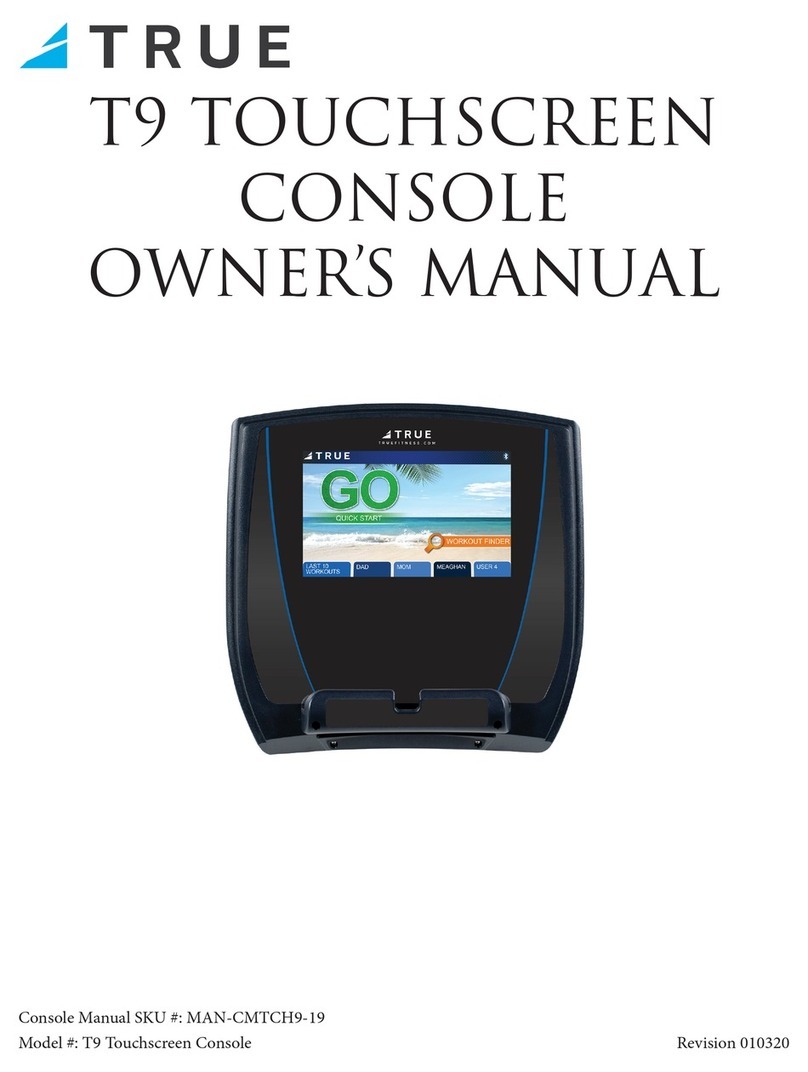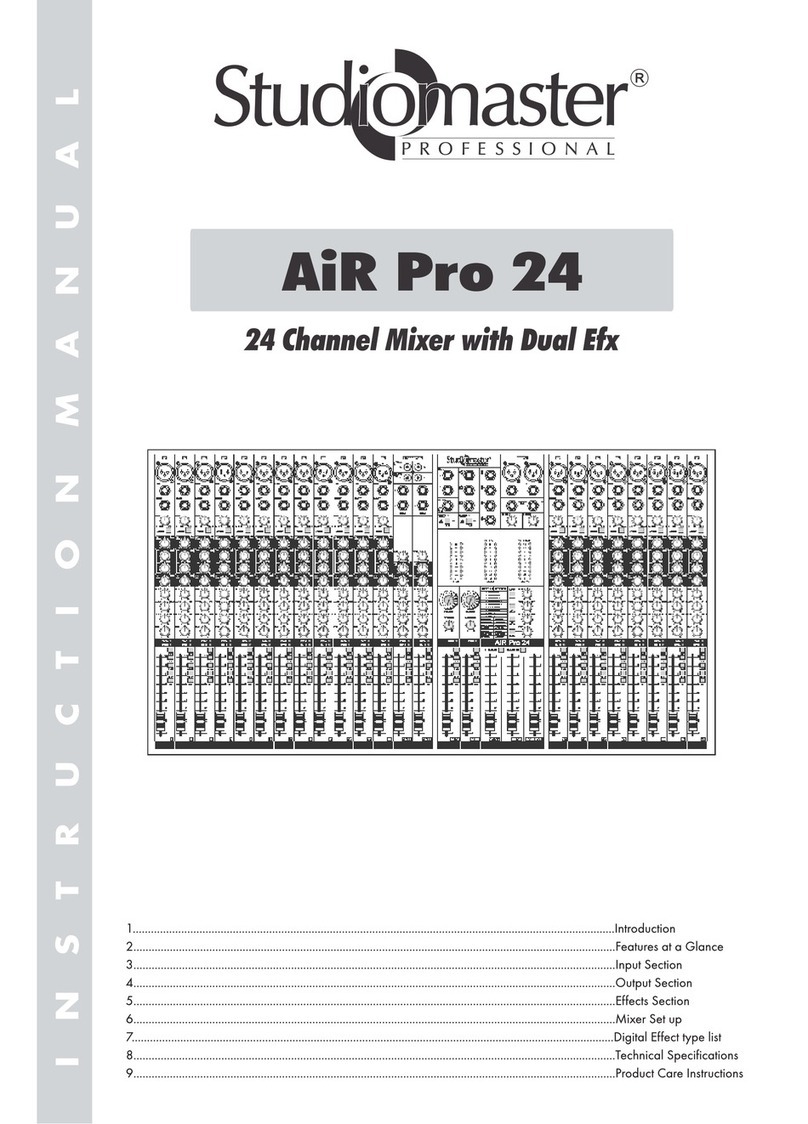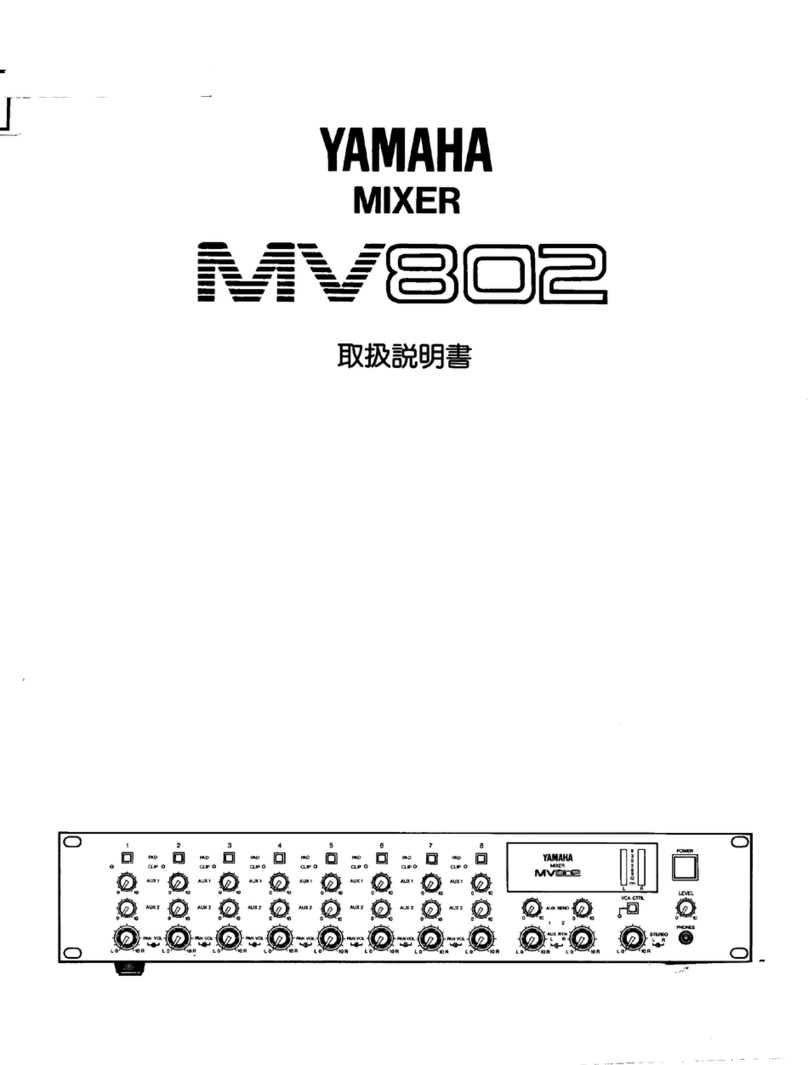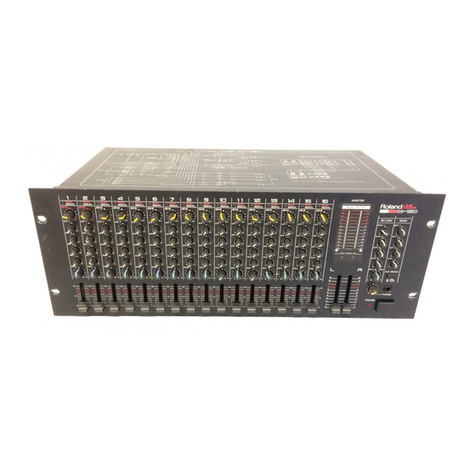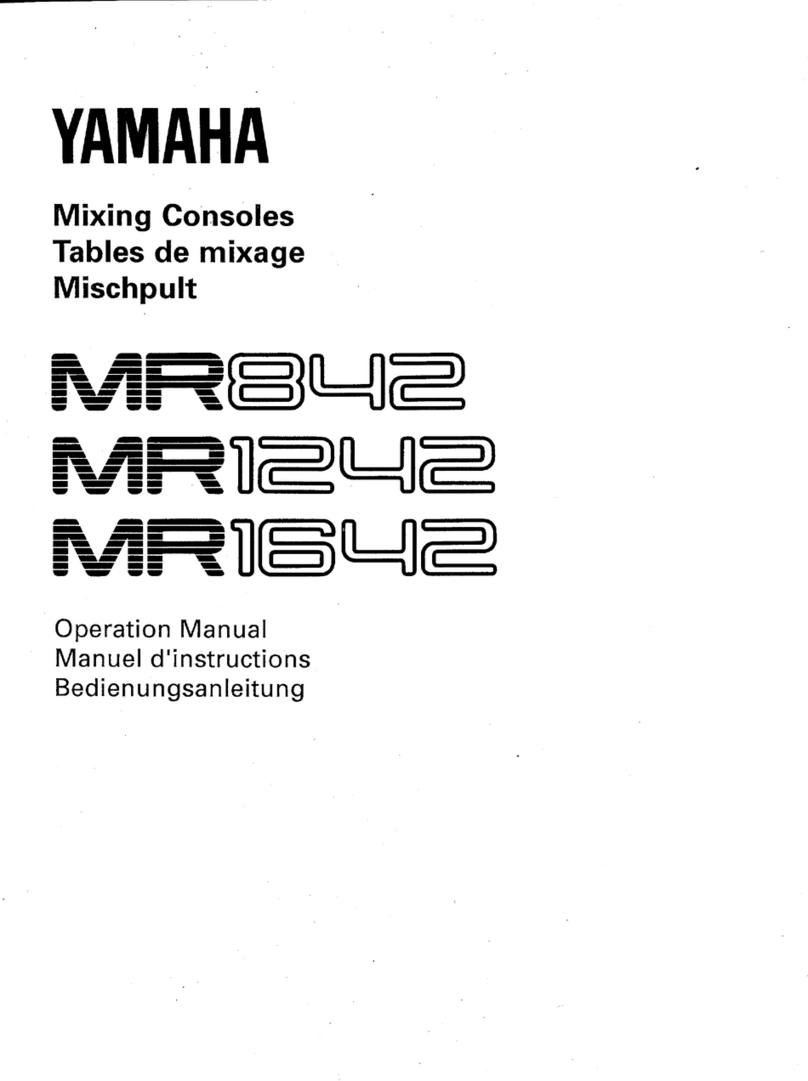
During its 30 year history, Midas has been producing live sound
consoles for the world's most demanding sound engineers and
maintains a policy of sonic excellence combined with usability and
reliability. To achieve this, the company has always wor ed closely with
leading professional in the field, and in the case of the XL4, Managing
Director, Bob Doyle, spent 10 painsta ing months finalising the
specifications of the console while discussing its concept and aims
with world class sound engineers, rental company heads, theatrical
production designers and artists. This close involvement of end users
enabled Midas to develop a console that would meet the 'real world'
needs of the most sophisticated customer, right across the live sound
spectrum.
The design brief for the console was to match or exceed the audio
performance of the highly acclaimed XL3 and to combine that with a
powerful, user-friendly automation system to deliver a no-
compromise live performance console ideally suited to the needs of
rental companies, touring system operators and high-end theatre
installations. The mixing environment was designed to enhance the
creativity of the mixing engineer, specifically by automating repetitive
tas s allowing the engineer to concentrate on the artistic aspect of the
performance.
The XL4 is a 48 channel, 45-buss console that also incorporates an 18
x 8 matrix and eight mute busses. It is designed to offer an uncluttered
control surface with the two groups of 24 channels split either side of
the central master section, yet it ma es effective use of space to offer
a reasonably compact footprint. A newly designed mic preamp has
been used that further improves on the XL3 circuit to provide increased
gain range and lower distortion. This design retains the constant
bandwidth topology of the XL3 to ensure amplifier stability along with
optimum RF rejection and noise performance at all gain settings. Its
EQ section is closely based on that of the acclaimed XL3, though the
treble and bass sections have been given extended frequency ranges
and may be switched to fully parametric operation.
A separate high impedance input, with level control, is provided for the
connection of playbac machines and other general-purpose line-
level sources and every channel is equipped with a half-normalised,
fully balanced, insert send and return (switchable pre or post
equaliser) that can be switched in and out from the front panel.
Any channel can be routed to any combination of 42 audio busses
comprising 16 mono aux sends, 4 stereo aux sends, 16 audio sub
groups and 1 stereo master. Routing can be accessed directly via the
front panel or via the on-board automation system. Each input channel
has a direct output that can be sourced pre or post equaliser. Excellent
metering facilities are provided via 28 high visibility, pea reading
bargraph meters that monitor all the main and group outputs but that
may be switched globally to monitor pre-fader or post fader sources
and may also be used to monitor the 24 aux output levels.
Up to 2000 automation scenes can be stored where a scene includes
the channel routing, all major channel control functions and all major
output mutes. The 12 motorised master faders (10 acting on inputs and
2 acting on audio groups) controlling VCAs and eight mute masters
provide direct control of signal levels within the console and it is
possible to import or export automation data for bac up or console
lin ing. Input faders can be motorised as an option.
Military spec circuit boards are used throughout, and as with the other
consoles in the Midas range, only tight tolerance components are used
along with hermetically sealed ALPS pots and 100mm Penny & Giles
faders. Li e the Midas Heritage series of consoles, the XL4 is
manufactured almost entirely by hand in Kidderminster where the
engineering and quality control standards demanded of Midas
consoles can be maintained. To bac up our confidence in the XL4, the
console carries a full three year factory warranty, plus the support of
a global distributor networ .
48 Mic Inputs
The XL4 features a new mic amplifier which further improves on the
XL3 design giving increased gain range and lower distortion, whilst
retaining the XL3's constant HF bandwidth topology which assures
excellent amplifiers stability, RF rejection and noise performance at all
gains.
Direct Outputs
Every input module is fitted with a direct output as standard with its
own level control and front panel switching which selects the source
from post fader, pre fader or pre insert and equaliser.
HISTORY
16 audio sub groups
The 16 main audio groups can be assigned to any of the 8 automute
groups and to VCA control from any combination of the 2 motorised
grand master faders. A safe switch is again included for each group.
The input for the groups is normally derived from the 16 group busses
but for monitor applications the fader change over routes the 16 mono
aux busses to the group faders.
Line inputs
A separate Hi Z line input with its own dedicated gain control is
incorporated which is ideal for playbac of recorded material. Global
change over from mic (record) to line (playbac ) is easy because it is
under automation control.
Equaliser
The sonic performance of the legendary XL3 equaliser is maintained
including the full parametric mid's and traditional Midas bass and
treble shelving responses. In addition the treble and bass sections now
have an extended frequency range and are switchable to full
parametric operation.
Inserts
Each channel has a half normalised fully balanced insert send and
return point which can be switched in or out from the front panel and
set as either pre or post equaliser.
Input metering
These pea reading meters cover a 60dB range in 3dB steps and can
be switched globally to monitor pre fader signals or pre insert and
equaliser signals.
Audio busses
Each channel can be routed to any combination of 42 audio busses
comprising of 16 mono aux'es, 8 stereo aux'es, 16 stereo groups and 2
stereo masters. All this is switchable on the module front panel but
also via the automation control.
VCA and mute busses
Each channel can be controlled by any combination of the 10 motorised
VCA master faders and 8 mute masters. Assignment of these busses
is again switchable on the module front panel or by the automation
control. A safe switch disconnects the channel from all mute groups
and an isolate switch removes the channel from all VCA control.
roup aux inputs
An additional 16 inputs with treble and bass equalisation can be routed
directly to the groups or via a pan to the masters mix and can be
further controlled by assignment to any of the 10 VCA masters.
Master
The stereo master module provides the main left and right console
outputs plus 4 more record outputs and a mono output. A solo to
master facility is incorporated on the left, right and mono outputs to aid
the engineer at sound chec s.
Matrix
As standard the 8 matrix outputs derive their signals from the 16 audio
groups, left and right masters creating an 18 x 8 matrix. The module
also houses the stereo aux masters which have their own outputs at all
times but which can be routed directly into the matrix giving an
additional 48 x 8 matrix sourcing direct from the input channels.
Output meters
28 pea reading meters (each covering a 60dB range in 3dB steps) are
used to monitor all the main outputs i.e. 16 groups, 8 matrix, 2 masters
and 2 local outputs. They and can be switched globally to monitor pre
fader or post fader signals and can also be used to monitor the 24 aux
outputs.
Automutes
The 8 automute masters can be assigned to any input or audio group
and act on pre fader and post fader signals. Apart from assignment the
operation of these mutes is entirely independent of the automation
system.
10 input VCA faders
10 motorised VCA master faders control the channel and aux inputs
whilst a further 2 VCA grand master faders control the audio groups.
Each VCA master has a solo switch which gives the engineer an
opportunity to monitor the signals within the VCA subgroup. Also
incorporated is a VCA mute which act on post fader signals only and
effectively adds a further 12 automute scenes to the existing dedicated
automutes.
Automation
The automation system can store and recall up to 2000 scenes. All
channel routing and major functions are automated as well as all
major output mutes. The 12 motorised VCA master faders give
dynamic control of signal levels within the console and all automation
information can be exported or imported in a variety of different
mediums for storage or console and system lin ing.
MIDAS XL4 FEATURES
MIDAS XL4 FEATURES
KT Midas XL4 (am quarto) 24pp 30/4/01 2:26 pm Page 3

